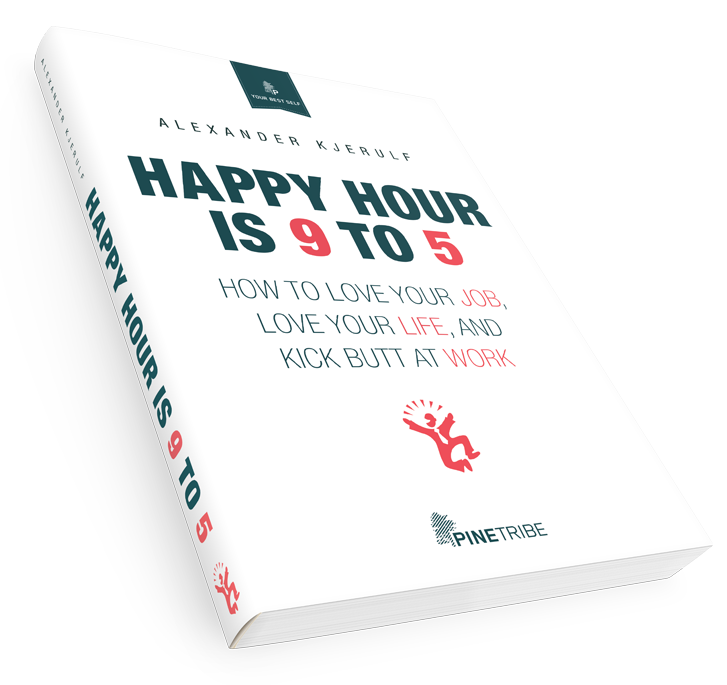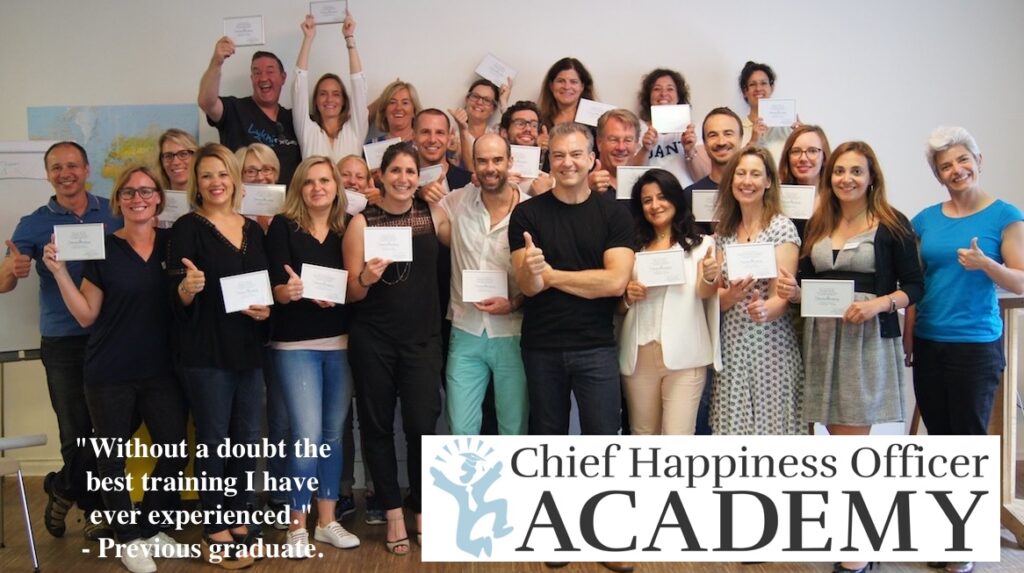
Meetings aren’t exactly the most popular workplace activity, as illustrated by this passage from the book jPod by Douglas Coupland:
Here’s my theory about meetings and life; the three things you can’t fake are erections, competence and creativity. That’s why meetings become toxic—they put uncreative people in a situation in which they have to be something they can never be. And the more effort they put into concealing their inabilities, the more toxic the meeting becomes.
One of the most common creativity-faking tactics is when someone puts their hands in prayer position and conceals their mouth while they nod at you and say, “Mmmmmmm. Interesting.??? If pressed, they’ll add, “I’ll have to get back to you on that.??? Then they don’t say anything else.
Web company 37signals consider meetings harmful because:
- They break your working day into small, incoherent pieces on a schedule incompatible with the natural breaks in your flow
- They are normally all about words and abstract concepts, not real things (like a piece of code or a screen of design)
- They usually contain an abysmal low amount of information conveyed per minute
- They often contain at least one moron that inevitably get his turn to waste everyone’s time with nonsense
- They drift off subject easier than a rear-wheel driven Chicago cab in heavy snow
- They frequently have agendas so vague nobody is really sure what its about
- They require thorough preparation that people rarely do anyway
I kinda agree. That is certainly how meetings are in many companies. The weekly department meeting, the project status meeting and the monthly division meeting are all seen as boring, a waste of time, painful and something that simply keeps people from getting real work done.
Last year, The Guardian mentioned a study that showed that meetings make people very unhappy at work, and that the more meetings one has to attend and the more time one spends in meetings, the greater the negative effects. This becomes especially depressing in the face of the fact that overall time spent in meetings is rising in most countries, and that some people, especially managers, spend most of their work day in meetings.
Now, while having fewer meetings is definitely the way to go in many workplaces, eliminating all meetings is not an option in today’s team-based work environment. This means that having good meetings become essential.
So what is a good meeting? They are:
- Efficient – So stuff gets done!
- Positive and fun – So people enjoy themselves and look forward to the next meeting.
- Participative – So everyone participates equally, instead of just zoning out or faking agreement.
- Open – So people say what they really think.
- Creative – So the thinking goes beyond the usual and into new territory.
The usual tips you’ll hear for managing meetings are kinda OK. You know, stuff like “have an agenda and distribute it in time”, “make sure to have the right people present”, “make sure to start and end on time” and “only have a meeting when necessary”. All good advice, but it does not address the goals above. This means that though most companies and teams follow this typical advice, many meetings still suck.
If we really want open, fun, creative, participative meetings we need to go beyond the standard advice and venture into slightly-weird-land. Here are five easy ways to do it.
1: Open the meeting with a positive round
Psychological experiments have shown that the way a meeting starts, sets the tone for the whole meeting. Start the meeting with complaints, problems and mutual blame, and that’s what you’ll get.
But if you start out with something positive, the rest of the meeting is more likely to be more fun. The best way to start a meeting positively, is to ask each participant to briefly (= less than 30 seconds) share something positive. Here are some ideas:
- Name one thing you’ve accomplished since the last meeting that you’ve been proud of?
- Name a person who has helped you since the last meeting.
- Mention one thing you’re looking forward to in the coming week/month?
- What’s the funniest thing someone has told you in the last week?
- Mention something interesting you’ve learned since the last meeting.
This sets a much better tone for the rest of the meeting – and it’s also a lot more fun than opening with an endless litany of complaints and problems.
2: Interrupt the meeting regularly
I know you want to make the most of your meeting time – and that makes it tempting to think that “MAN, we have a long agenda today – let’s skip the breaks and get more done.” Only thing is, it doesn’t work that way.
You need to interrupt the flow of the meeting regularly. This keeps people’s minds focused and it makes the whole thing more fun and relaxed. Here’s how.
First of all: A five-minute break every hour is not an option, it’s mandatory! You can’t have a productive meeting if half the people present are seriously in need of a restroom visit.
Secondly: Every half hour, do a quick two-minute creative break of some kind. You can: Get people to stand up and stretch, have a quick rock-paper-scissor tournament, ask everyone to tell their neighbor a riddle or a joke, whatever. Make it something fun and light-hearted that activates people in some way.
So if you have a two-hour meeting starting at 1PM, include these breaks:
1 PM: Meeting starts
1:30 PM: Two-minute creative break
2 PM: Five minute break
2:30 PM: Two-minute creative break
3 PM: Meeting ends
Bring a kitchen timer and set it to 30 minutes, to make sure you remember the creative breaks.
3: Lose the table
What purpose do tables really serve at a meeting, except to give you a place to put down your coffee cup and to keep your head from hitting the floor when you fall asleep?

Traditional meeting room. Note the huuuuge distance from one end to the other and the place of honor at the head of the table.
There are many advantages to table-less meetings:
- People are more free to move around, instead of being locked into one sitting position.
- Communication flows better, because you can see the entire person, not just from the chest up.
- You increase participation, because people can’t simply slump down and hide throughout the meeting.
- You can get people closer together. If you seat 20 people around a table, the distance from one end to the other is going to be huge.
- Seating people in a circle signals that everyone is equal. It’s democratic, unlike the normal meeting table, where the boss sits at the head of the table.
So instead of meeting around a table, simply put the required number of chairs in a circle with nothing in the middle. If you’re going to be looking at a lot of plans or papers, hang them on the wall and arrange the chairs in a semi-circle in front of them.
4: Get the body in there
Your body is not good at sitting still for extended periods of time. The longer you sit still, the more stiff and tired the body gets. And when the body is tired and stiff, so is the mind.
A very simple thing to do is to get people to stand up and stretch. It only takes a minute to:
- Get everyone to stand up.
- Bounce on your feet for 10 seconds, just to get the blood flowing.
- Stretch your arms up towards the ceiling – as high as you can.
- Keep your arms up and lean to the right. Hold for 10 seconds.
- Lean to the left, hold.
- Lean back, hold.
- Lean forward, touch your toes.
- Sit back down.
You can do it at the beginning of the meeting, after every break or whenever you sense that people are zoning out and losing focus.
Try this one day in a meeting, and you will discover that once you’ve stretched your body, your mind will feel fresher, more flexible and more creative.
5: Use strategically placed silence
This is probably the one thing you find in no meetings. I mean – the purpose of meetings is to talk, right. Silence kinda defeats that purpose, doesn’t it?
No. The purpose of meetings is not to talk – the purpose of meetings is to arrive at ideas, solutions, plans and decisions in such a way that:
- The ideas are so good that they can be carried out.
- The process that leads to the ideas is so good that people want to carry the ideas out.
And in this respect, silence can be a great tool. Because while some people can think while they’re talking – most can’t.
A well-placed two-minute silent break is a great chance for people to stop and think. To figure out what the deeper issues are. To see the solution that is not immediately obvious. To find out how they feel about the issues being discussed.
Here are some ways to use it:
- When discussing an issue, focus first on presenting the facts without discussing solutions. Have two minutes of silence, then discuss solutions.
- If discussions become heated, and it seems like no progress is made, two minutes of silence can be a great way to cool the whole thing down.
- When a decision has been made, give people two minutes of silence to think about how they feel about this decision.
The way you do it is that at the appropriate time, you announce a two-minute silence, and you keep track of time and let people know when the two minutes have passed.
And let me warn you right away: It feels very strange the first few times. It’s funny that silence should be so threatening, but because most meetings are all about the talking, and we’ve come to think that silence is awkward. That if no one’s talking, something is wrong. After you’ve done it a few times, it becomes a lot easier, and it can even be very pleasant to take a break from all the talking!
The upshot
Time spent in meetings is constantly increasing. Bad meetings suck the life force out of people, leaving them tired and unhappy at work. Bad meetings also lead to bad decisions, reduced motivation and conflicts.
If we really want fun, positive meetings, where all participants can speak their mind, where new ideas are generated and developed and where the time is used as efficiently as possible, we need to go beyond the usual advice and try something slightly weird. This blogpost presents some ways you can do that.
Yes, adding these things to a meeting will take a little time out of the schedule, but I think we all know that the problem with bad meetings is not how much time we spend in them – it’s the quality of that time. It’s whether we spend that time being energized, creative and having fun – or whether we spend it wishing we could be back at our desks doing some real work.
What about you? What unusual methods do you use to make meetings fun, creative and efficient? How do good or bad meetings affect your energy and motivation? Have you tried any of the tips mentioned here? Write a comment, I’d really like to know your take.
Related:



Leave a Reply